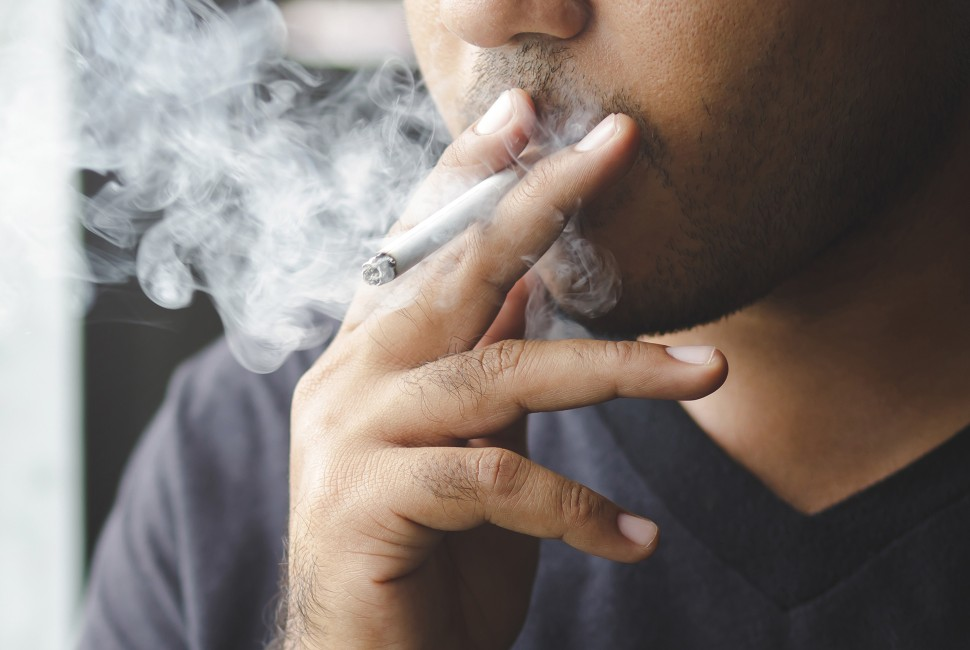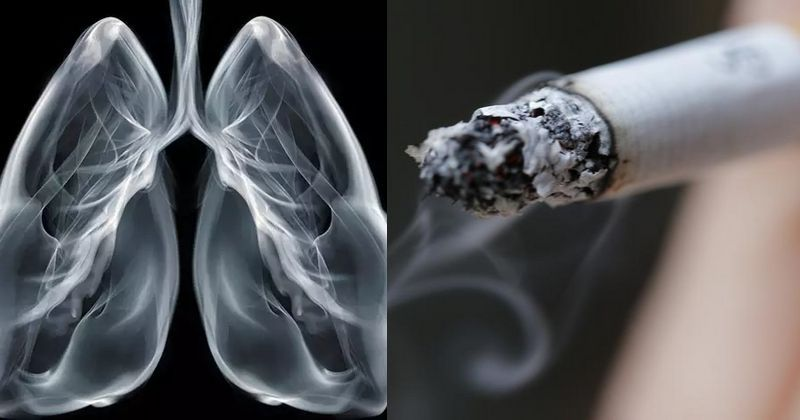Dangerous Types of Smoke and How to Avoid Smoke-Related Diseases
Smoke is an invisible danger that we often underestimate. Whether it comes from cigarettes, wildfires, factories, or vehicles, smoke contains a variety of harmful substances that can cause serious health issues. In this article, we will explore the different types of smoke that pose a risk to human health, how these types of smoke affect the body, and practical steps to avoid or minimize exposure to them.
Types of Harmful Smoke
1. Cigarette Smoke
Cigarette smoke is one of the most studied and dangerous forms of smoke exposure. It contains over 7,000 chemicals, including tar, carbon monoxide, ammonia, and formaldehyde.
Health Risks:
-
Lung cancer
-
Chronic obstructive pulmonary disease (COPD)
-
Heart disease
-
Stroke
-
Low birth weight in infants (if exposed during pregnancy)
2. Wildfire Smoke
Wildfire smoke is a complex mixture of gases and fine particles from burning vegetation, trees, buildings, and vehicles. The most concerning component is PM2.5 (particulate matter smaller than 2.5 micrometers), which can penetrate deep into the lungs.
Health Risks:
-
Respiratory irritation
-
Asthma attacks
-
Increased risk of heart attacks
-
Eye and throat irritation
-
Reduced lung function in children
Particularly vulnerable groups: Children, elderly, pregnant women, and people with pre-existing respiratory or heart conditions.
3. Vehicle Emissions (Traffic Smoke)
Traffic emissions include nitrogen oxides, carbon monoxide, benzene, and diesel particulate matter, especially in areas with heavy congestion.
Health Risks:
-
Increased risk of lung cancer
-
Cardiovascular diseases
-
Premature death
-
Neurodevelopmental problems in children
-
Worsened asthma and bronchitis
4. Industrial Smoke and Factory Emissions
Factories and power plants release smoke that includes sulfur dioxide, heavy metals (like lead and mercury), dioxins, and volatile organic compounds (VOCs).
Health Risks:
-
Long-term respiratory diseases
-
Increased cancer risks
-
Kidney and liver damage
-
Endocrine system disruption
5. Indoor Smoke from Cooking and Heating
In many parts of the world, especially in developing countries, indoor air pollution from burning wood, coal, or animal dung is a major health hazard.
Health Risks:
-
Acute respiratory infections (especially in children)
-
Lung cancer
-
Cataracts
-
Stroke
-
Chronic bronchitis
Women and children are particularly at risk due to prolonged indoor exposure.
6. Secondhand Smoke
Secondhand smoke, also called passive smoke, is the smoke exhaled by smokers or emitted from the burning end of cigarettes, cigars, or pipes.
Health Risks:
-
In children: Sudden Infant Death Syndrome (SIDS), ear infections, and developmental delays
-
In adults: Lung cancer, stroke, and heart disease
7. E-Cigarette (Vape) Smoke
Though marketed as safer alternatives, e-cigarettes release aerosols containing nicotine, heavy metals, formaldehyde, and other harmful chemicals.
Health Risks:
-
Lung injury (EVALI)
-
Increased blood pressure and heart rate
-
Potential gateway to traditional smoking
-
Negative effects on adolescent brain development
8. Incense and Candle Smoke
Burning incense and candles produces smoke that includes benzene, toluene, and fine particulate matter.
Health Risks:
-
Lung inflammation
-
Exacerbation of asthma
-
Indoor air pollution
-
Carcinogenic risks with long-term exposure
How Smoke Affects the Body
Smoke can have both immediate and long-term effects on health:
| Body System | Effects of Smoke Exposure |
|---|---|
| Respiratory System | Shortness of breath, asthma, lung cancer, COPD |
| Cardiovascular System | Increased blood pressure, heart attacks, strokes |
| Immune System | Suppression of immune responses, increasing infection risk |
| Neurological System | Impaired cognitive development in children, increased dementia risk |
| Reproductive System | Infertility, miscarriage, low birth weight |
How to Prevent Diseases Caused by Smoke Exposure
1. Avoid Cigarette Smoking and Vaping
-
Quit smoking using counseling or cessation tools (nicotine patches, medications).
-
Avoid areas where others are smoking.
-
Support smoke-free environments in public places.
2. Reduce Exposure to Wildfire Smoke
-
Monitor local air quality using apps like AQI or websites like AirNow.
-
Use N95 masks when air quality is poor.
-
Stay indoors with windows closed and use air purifiers.
-
Avoid strenuous outdoor activity during smoke events.
3. Use Clean Cooking Technologies
-
Switch to electric or gas stoves if possible.
-
Ensure good ventilation in kitchens (windows, exhaust fans).
-
Use chimneys or hoods to redirect smoke outside.
4. Improve Indoor Air Quality
-
Use HEPA air filters in enclosed spaces.
-
Avoid burning candles or incense frequently.
-
Ensure proper ventilation.
-
Keep plants indoors to naturally improve air quality.
5. Stay Informed on Air Pollution Levels
-
Track AQI (Air Quality Index) daily.
-
Avoid outdoor activities when pollution is high.
-
Advocate for clean energy and reduced industrial emissions.
6. Use Protective Equipment
-
Wear respirator masks (N95 or better) during smoke exposure.
-
Install carbon monoxide detectors in your home.
-
Use air purifiers during pollution-heavy seasons or near factories.
7. Urban Planning and Policy Support
-
Encourage policies that reduce traffic emissions (bike lanes, public transport).
-
Support green energy initiatives and clean manufacturing standards.
-
Participate in community awareness programs.
Who Is Most at Risk?
Some people are more susceptible to the harmful effects of smoke:
-
Children (due to developing lungs)
-
Elderly individuals
-
Pregnant women
-
People with asthma, heart disease, or COPD
-
Outdoor workers (firefighters, traffic police, etc.)
Global Statistics on Smoke-Related Diseases
According to international organizations:
| Source | Statistic |
|---|---|
| WHO (2023) | Tobacco kills more than 8 million people each year. Over 1.3 million of these deaths are due to secondhand smoke. |
| World Bank (2022) | Indoor air pollution causes over 3.2 million deaths annually, mainly in low- and middle-income countries. |
| UNEP (2021) | 99% of the world’s population breathes air that exceeds WHO guidelines for pollution. |
| CDC (2024) | Wildfire smoke exposure increased ER visits by 42% in affected areas in the U.S. during the 2023 season. |
Smoke is a silent and dangerous health threat that comes from many sources, not just cigarettes. Awareness of different smoke types and their risks is essential for protecting individual and community health. Whether through personal choices, protective measures, or policy advocacy, reducing exposure to harmful smoke can save lives and improve quality of life globally.
References and Sources
-
World Health Organization (WHO). Air Pollution. Retrieved from: https://www.who.int/health-topics/air-pollution
-
Centers for Disease Control and Prevention (CDC). Health Effects of Cigarette Smoking. Retrieved from: https://www.cdc.gov/tobacco
-
United Nations Environment Programme (UNEP). Pollution and Health. Retrieved from: https://www.unep.org
-
World Bank. Household Air Pollution. Global Health Data Exchange, 2022.
-
Environmental Protection Agency (EPA), U.S. Wildfire Smoke: A Guide for Public Health Officials.
-
Global Burden of Disease Study, Institute for Health Metrics and Evaluation (IHME), 2023.




.jpeg)
Comments
Post a Comment